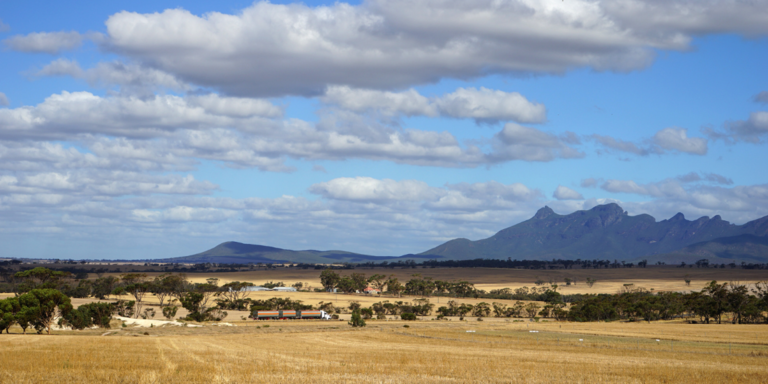- Buy
- Rent
- Sell
- About Us
- Contact Us
Investors & Landlords
Manage My PropertyWhy choose Us
Raine & Horne Richmond, NSW is a full service real estate agency with a reputation for expertise and a commitment to excellence. We take the management of your investment property seriously and believe our proactive approach is what sets us apart from our competitors. The consistent growth of our business is due to our proven track record of providing owners with service in which they have 100% confidence that their property is being well cared for.
Our focus is to maximise your return on investment and our trained staff with a hands on approach, together with our fine-tuned systems and cutting edge technology, will guarantee your peace of mind throughout your property investment journey. We are committed to providing a level of service unmatched in the industry and will communicate with you regularly about all the important matters relating to the leasing and management of your rental property.

Specialist Team
Our team is highly trained in all facets of property management including constantly changing legislation

Regular Communication
We believe communication is an integral part of our service to you and we will ensure you are involved in all decisions regarding your property

Technology and Systems
We have invested in various systems and technologies to ensure we deliver the best results for our customers

Market Knowledge
Our Property Managers understand market conditions and how this will impact the rental yield of your investment

Global Brand
Our local knowledge is backed by our collective strength and the comprehensive resources offered to our Property Managers by the Raine & Horne network
Raine & Horne in numbers
Properties under managements across the network
New tenants moved into their new Raine & Horne managed properties
Property Managers ready to support you through your property investment journey
Property Management News

Raine & Horne Rural has wrapped up a breakout 2024–25 financial year, capped by a $13 million farmland sale in Western Australia and the listing of a massive cattle station, spanning 407,000 acres.
These headline-grabbing milestones were part of a broader year of success, with the network listing 425 rural properties and settling 210 transactions nationwide, representing almost $300 million in agricultural sales.
“The results for the 2024/25 financial year reflect continued demand for quality rural holdings and the expanding strength of Raine & Horne’s growing rural network,” said Travis Wentriro, Regional & Rural Network Manager at Raine & Horne Group.
Investor confidence in large-scale agricultural assets remained strong, with five properties selling for more than $10 million. The top sale of the year was a $13 million transaction for a 3,438-acre mixed farming property at 2577 Gnowangerup-Tambellup Road, Dartnall, WA. Sold by John Hetherington and the team at Raine & Horne Rural Great Southern, the property spans seven titles and offers productive cropping and grazing potential just outside Tambellup.
In terms of scale, the largest listing was Dairy Creek Station—a 407,000-acre (1,650 square mile) cattle station in WA’s Upper Gascoyne, marketed by Gerald Wetherall of Raine & Horne Rural WA. Still available, the listing demonstrates the network’s capacity to handle landmark rural assets across Australia’s vast regions.
As the new financial year gets underway, Raine & Horne Rural has over 320 rural properties currently listed for sale nationwide providing further evidence of a market still brimming with opportunity.
If you’re looking to buy, sell, or expand your rural holdings in 2025–26, contact your local Raine & Horne Rural office for expert guidance.

For many Australians, the answer appears to be yes, especially if recent trends in investor lending are anything to go by.
According to a recent report from PropTrack[i], investor activity has rebounded strongly over the past 18 months, with new investor loans climbing to levels not seen in nearly a decade.
This surge comes after a quieter stretch following mid-2022, when the Reserve Bank began lifting interest rates. With rental markets still extremely tight and rents continuing to rise[ii], more investors are stepping back in—and any further rate cuts won’t hinder this momentum either.
Investor lending has become a substantial share of new loans, approaching multi-decade highs in some smaller states, and the strongest nationally since 2017. In contrast, owner-occupier activity has picked up only modestly. This suggests investors are seeing opportunities others might be missing.
While the market is showing signs of growth, investing in real estate isn’t a guaranteed path to easy profits. Investors still need to do their homework and work closely with their local Raine & Horne agent to secure a quality, well-located property that can ultimately pay for itself. Apartments are increasingly appealing in this landscape, often attracting lower land tax liabilities than houses. In fact, you may be able to own multiple apartments before reaching the land tax threshold in your state or territory—and for what it’s worth, there’s no land tax at all in the Northern Territory[iii].
Victoria, however, is a notable outlier. Investor interest remains more subdued there, likely due to a combination of softer rent growth and increased land tax burdens. Still, with Melbourne’s median home price now below Adelaide’s and Brisbane’s, and rate cuts now beginning to flow through to the market, investor interest in Victoria is set to pick up speed.
That said, land tax remains a key consideration. In NSW, for example, investors with combined landholdings above the $1,075,000 threshold are liable for an annual land tax of $100 plus 1.6% of the land value above that amount. A portfolio with $2.5 million in unimproved land value would result in a $22,900 tax bill.
Here’s the breakdown:
$2.5 million – $1,075,000 (general threshold) = $1.425 million (taxable land value).
$1.425 million × 1.6% = $22,800, plus $100 base tax = $22,900 total land tax liability.
The bottom line is that strong rental growth, tight vacancy rates, and the prospect of further rate cuts all point to now being a potentially favourable time to invest, provided you do your homework. Focus on securing a quality, well-located property, and make sure you understand the tax implications with the help of your accountant.
In particular, be mindful of land tax and other holding costs to ensure the investment stacks up financially.
[i] https://www.proptrack.com.au/insights-hub/investors-are-busy-buying-up-a-storm-in-all-but-one-state/
[ii] https://cdn.rea-group.com/wp-content/uploads/2025/04/17100502/REA-Group-Market-Insight-Rental-Prices-March-2025.pdf
[iii] https://business.gov.au/finance/tax/taxes-on-your-property#:~:text=pest%20eradication-,Land%20tax,except%20for%20the%20Northern%20Territory.

Mould is a serious concern in Australian homes, posing risks to both property and health.
Estimates suggest that up to half of all Australian homes may be affected by mould, with renters particularly vulnerable[i]. Poor housing conditions—especially in the rental sector—combined with recent wet weather patterns such as La Niña have created ideal conditions for mould to thrive.
According to Asthma Australia, any level of mould is considered unsafe for health, regardless of whether a person has asthma. Exposure can worsen existing respiratory conditions and even increase the risk of developing asthma.
While it’s commonly believed that mould only grows in warm, humid environments, winter can be just as problematic. Cold temperatures may slow down the growth of mould spores, but poor ventilation and condensation from indoor heating create the damp conditions that mould needs to flourish.
Mould is a type of fungi—part of the same group as yeast and mushrooms—and is found both indoors and outdoors. When airborne mould spores settle on damp surfaces inside the home, they can begin to grow and spread rapidly.
It thrives in moist, poorly ventilated areas such as walls, ceilings, insulation, mattresses, carpets, tiles, and wood.
Ultimately, it is the landlord’s responsibility to provide a mould-free rental. In most states and territories, landlords are legally required to ensure a property meets minimum standards—this includes providing new tenants with a clean, safe, and mould-free environment. These obligations may vary depending on local state or territory legislation.
Even in vacant properties, mould isn’t always visible—so early detection is key. Tenants should promptly report any signs of mould or mildew to their Raine & Horne Property Manager, along with any issues that could lead to mould growth, such as roof leaks, plumbing problems, or water leaks through walls or windows. Poorly sealed windows and inadequate ventilation in bathrooms and kitchens can also contribute to mould formation.
Once notified, your Raine & Horne Property Manager will arrange for qualified tradespeople to assess and address the issue.
Some properties—due to age, structural design, location, or ventilation—may be more susceptible to mould. In these cases, landlords are generally responsible for organising and covering the cost of remediation.
Blocked roof gutters are another common cause of mould, particularly after storms or heavy rainfall. Tenants should report blocked gutters, as landlords are responsible for ensuring they are cleared. Left unchecked, overflowing gutters can cause water damage and promote mould growth, potentially leading to costly structural repairs.
While landlords are responsible for maintaining the property to prevent mould, tenants are responsible for cleaning visible surface mould, as outlined in their tenancy agreement. Fortunately, there are practical and eco-friendly cleaning products available that make this task safer and easier than ever.
To find out more about your obligations as a tenant, reach out to your local Raine & Horne office without delay.
[i] https://asthma.org.au/about-us/media/new-report-goes-inside-australian-homes/#:~:text=50%25%20of%20Australians%20have%20had,people%20with%20and%20without%20asthma.

Great question. Ending a tenancy can feel overwhelming, but with the appropriate preparation, you can ensure a smooth transition and maximise your bond refund.
To make things easier, we’ve prepared a handy step-by-step guide—“How to Ensure the Return of Your Bond”—outlining everything you need to know to help secure your full bond refund. Ask your Raine & Horne Property Manager for a copy today.
- Review your entry condition report
Your Entry Condition Report is your benchmark. Before vacating, review it closely to understand how the property was presented when you moved in. Your goal is to return it in the same condition—allowing for fair wear and tear.
Common areas to check:
- Stains on carpets or marks on walls
- Damaged blinds or fittings
- Scuffed skirting boards, chipped paint, or broken windows
- Outdoor areas, including lawns, gardens, and pools
- Decide on DIY or professional cleaning
Cleaning is the number one reason tenants are asked to return after they vacate or have part of their bond withheld. While a DIY clean is fine, hiring a professional cleaner—especially one recommended by your Property Manager—can save you time and improve your chances of a full bond refund.
Focus on these areas:
- Kitchens and bathrooms
- Skirting boards and exhaust fans
- Air conditioners, ceiling fans, and blinds
- Windows (inside and out), including tracks and flyscreens
If carpets were professionally cleaned at the start of your lease, they must be professionally cleaned again. If you’ve had pets, you’ll also need to arrange pest control in line with your tenancy agreement.
- Check and complete repairs
Check your entry condition report for any wall or floor damage, like chips, dents, or scratches. If repairs are needed, speak with your Property Manager about using a recommended tradesperson to ensure the work meets requirements and supports your bond refund.
- Prepare outdoor areas thoroughly
For those renting a house or townhouse, don’t overlook the property’s outdoor areas:
- Lawns and gardens: Mow, edge, and weed to reflect the condition noted in your Entry Condition Report.
- Rubbish removal: Ensure all indoor and outdoor areas—including the curbside—are completely cleared of rubbish.
- Finalise the last details
Before you hand back the keys, make sure you’ve taken care of these essential final tasks to avoid delays with your bond refund
- Keys and remotes: Return all sets, including garage fobs and access cards
- Outstanding rent or bills: Ensure all payments, including water usage, are settled
- Belongings: Remove everything from the property before the final inspection—leftover items can delay your bond return
- Why every dollar matters
With the rising cost of living—including power bills and health insurance—recouping your full bond is more important than ever. By cleaning thoroughly, repairing damage, and finalising payments, you’re taking smart steps to secure your bond refund.
For more tips on securing a full bond refund, contact your Raine & Horne Property Manager and ask for a copy of our exclusive guide, “How to Ensure the Return of Your Bond.”

If you already own a rental property or are considering purchasing one, landlord insurance can help protect your investment from unexpected financial setbacks.
What does landlord insurance cover?
- Landlord insurance typically provides cover for:
- Malicious damage or theft caused by tenants or any of their guests
- Loss of cash flow if a tenant defaults on rental payments
- Legal expenses if a dispute with a tenant ends up in court
- Damage to the building or its contents, such as furniture, appliances, light fittings, or carpets, caused by fire, storms, floods, lightning, vandalism, or falling trees.
Most landlord insurance provides public liability style coverage if a tenant suffers injury, death, or property damage where the landlord is deemed at fault. Just be sure to check the fine print.
Not everything is covered
Like most insurance products, landlord insurance isn’t one-size-fits-all. Coverage levels and exclusions vary by provider. For instance:
General wear and tear is not covered
Damage caused by the landlord to the property is excluded
Claim limits and conditions can differ between policies.
Make sure you review the terms and conditions (Ts & Cs) carefully to understand what’s included in your specific landlord insurance policy.
Also, if you own an apartment, townhouse, or villa, some insurance costs may be shared among owners. For example, in strata-titled properties, building insurance is typically arranged by the body corporate and paid for through your regular strata levies. However, it’s essential to understand exactly what this insurance covers—and what it doesn’t. Items such as window furnishings and wall-mounted air conditioning units may not be included under strata insurance.
Landlord insurance and tax time
As a general rule, landlord insurance premiums are tax-deductible—a timely reminder as the end of the financial year approaches. However, deductions apply only to periods when the property is genuinely available for rent.
Need help choosing a policy?
Landlord insurance is a valuable tool to reduce financial and emotional stress, especially when the unexpected happens. To explore your options and expert guidance, speak to Our Broker today about your landlord insurance needs.

With the Bureau of Meteorology (BOM) predicting a milder-than-usual winter this year, now could be a great time to move forward with your real estate plans.
Jack Frost might be taking a back seat this year, with the BOM forecasting that the odds of above-average temperatures exceed 70% across regions including south-western and northern Western Australia, eastern and northern Queensland, Victoria, Tasmania, southern New South Wales, and south-eastern South Australia[i].
While some might jest that the BOM doesn’t always get it right, one thing is clear: the long-held belief that spring is the best time to sell is starting to shift. With warmer-than-average weather on the cards, along with the prospect of more interest rate cuts, this winter is likely to attract strong buyer turnout at open homes in many parts of Australia.
Why winter works for sellers – reduced competition
Spring often brings a surge in new listings, which can dilute buyer interest. In contrast, Raine & Horne research shows that property listings typically drop by 15–20% during the colder months of the year, giving sellers less competition and greater visibility with serious buyers.
In fact, the latest Raine & Horne market data shows that national listings were down more than 23% at the start of May, yet buyer activity—measured by open home attendance—remains on par with levels achieved earlier this year.
6 ways to present your property at its best this winter
1. Maintain the garden for a strong first impression
Don’t let winter become an excuse for garden and lawn neglect. Rake up fallen leaves, trim hedges, and keep the lawn neat. Tidy outdoor spaces create a strong first impression with buyers.
2. Declutter your space to make a strong second impression
No matter the season, clutter can make a home feel smaller, darker, and less inviting.
Take the time to remove unnecessary items such as knick-knacks, family photos, and other unnecessary flotsam and jetsam, storing personal belongings, and organising each space, whether it’s the loungeroom, bedrooms, kitchen, or bathrooms. A clean, open layout enhances the sense of space and helps potential buyers picture themselves living in your property.
3. Make your property warm and welcoming
Colder weather gives you the chance to highlight your property’s comfort. Turn on the heating, light up the fireplace if you have one, or use candles to create a snug and inviting environment. It helps buyers picture themselves living in your property.
4. Maximise the winter light
Shorter days make natural light more valuable. Open blinds and curtains to let in as much daylight as possible and consider adding lamps to brighten darker corners. Bright, well-lit spaces feel bigger and more appealing to buyers.
5. Create a seasonal atmosphere
Add soft furnishings such as throws, cushions, and rugs with warm tones and textures. These are simple styling touches, but they can also enhance the comfort and visual appeal of your property.
6. Handle repairs early
Fix leaking taps, broken tiles, or touch up scuffed walls before inviting buyers to your open home. Also, if there is any mould or mildew, be sure to deal with these blotches before your buyers arrive.
A well-maintained property reassures potential buyers and helps justify your asking price.
Thinking of selling this winter?
With lower competition, strong buyer interest, and a milder winter and more interest rate cuts forecast, the cooler months of 2025 could be the perfect time to sell.
For expert advice on how to present your home in its best light this winter and a no-obligation market appraisal, contact your local Raine & Horne agent today.
[i] http://www.bom.gov.au/climate/ahead/outlooks/#:~:text=Long%2Drange%20forecast%20overview&text=warmer%20than%20average%20days%20are,southern%2C%20northern%20and%20eastern%20Australia


